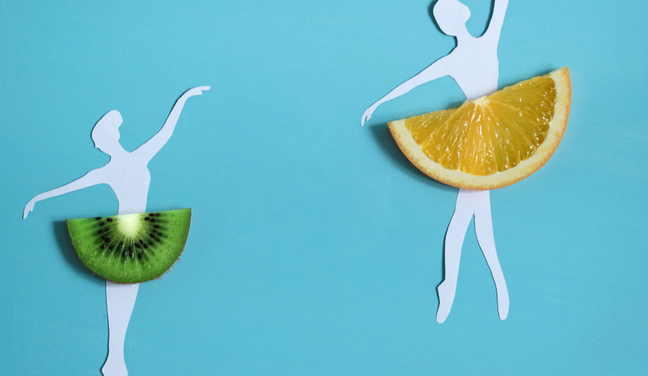Food Plan for a Successful Summer Intensive
Summer intensives offer an incredible opportunity for dancers. The ability to experience new teachers and choreographers allows dancers to sharpen their technique while new peers help to broaden a dancer’s network. Though these positive experiences bring new opportunities, they can also bring challenges.
Without question, intensives are intense. Mornings of classes are followed with afternoons of rehearsals and new choreography occupies a dancer’s mental capacity. Especially during these extreme seasons, the body expends higher levels of energy when compared to a dancer’s year-round schedule.
Dancers can also fall into intentional patterns of under-fueling for reasons like weight loss, wanting to “be healthy,” and/or wanting to achieve an idealized version of his or her body. Though these behaviors can happen at any time, the competitive atmosphere of summer intensives creates a vulnerable environment.
Food is the body’s fuel. Without enough fuel, a dancer risks low energy, inability to concentrate, injury, and burnout. To optimize a dancer’s summer experience, steer clear of under-fueling and consider these tips before embarking on a program:

- Snack Prep:
We talk a lot about meal prep, but summer schedules often take dancers into the studio from morning to night. As a result, it’s critical to remember: small, quick, and convenient. Enter snacks: packable options that are easily accessible even during a 2-minute shoe-change. Want a TTP favorite? Prep a serving of sunflower seed butter into a baggie with sliced apples and pretzels. The pair replenishes your energy and keeps you satisfied until your next meal. … Don’t forget a napkin! For more tips on snack prep, check out my Guide to Summer Intensives!
- Get Comfortable with Labels
Food labels! From the “eat clean” hashtag to the latest Netflix “raw food” documentary, packaged snacks get a questionable reputation. However, processed foods don’t have to be unhealthy! These options are often the most convenient when packing for a long day of classes. Be mindful of labels and don’t focus on the numbers (calories, etc.). Instead, identify whole food ingredients, such as nuts, seeds, fruit, veggies, and grains. These will provide quality sources of nutrients to fuel your movement. Download my tutorial if you’re looking for more insight!
- Ask for Help
Given our society’s fixation on dieting, body weight, and calories, dancers remain vulnerable to the “less is more” mindset. With mixed messages filling social feeds and studios, it can be difficult for a dancer to navigate a healthy lifestyle. Reach out to a professional, such as a Registered Dietitian Nutritionist, if you’re struggling to find balance between the studio and your plate. Online resources can provide convenient help even during your busiest days.


